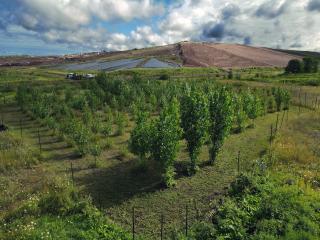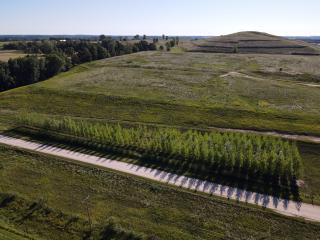United Nations certifies phyto-recurrent selection for combating pollution

NEW HAMPSHIRE—After two decades of development and testing, phyto-recurrent selection has been certified by the United Nations’ Decade on Ecosystem Restoration as a good practice within their “Framework for Ecosystem Restoration Monitoring” registry. The certified practice went live online in July 2023.
In 2003, USDA Forest Service researchers began developing phyto-recurrent selection as a method of choosing favorable tree varieties to be used for phytoremediation and other phytotechnology applications. Phytoremediation is a plant-based approach used to mitigate environmental pollution, such as water or soil contamination, through the harnessing of the natural abilities of certain plants to absorb, detoxify, and sequester pollutants from the surrounding environment.
“Phytoremediation is a nature-based solution for reducing the impacts of pollution to the environment and human health. The approach takes advantage of microbial processes in the rhizosphere (root zone) which break down organic contaminants, as well as processes occurring within tree roots, wood and leaves that actively break down, utilize and store contaminants,” explains Liz Rogers, a Pathways intern with the USDA Forest Service.
Throughout the history of implementing phytoremediation, a big question facing researchers has been how to best maximize the environmental benefits of trees grown in phytoremediation systems. Put simply, there is no single type of tree that will work best in every environmental circumstance. This team of Forest Service researchers thinks they have found an answer—phyto-recurrent selection.
“In phyto-recurrent selection, we match specific genotypes that respond best to remediating various types of pollutants while factoring in environmental conditions at a specific site, such as soil type and local climate,” says forester Ryan Vinhal.
With phyto-recurrent selection, researchers begin with a wide range of tree genotypes planted within a greenhouse setting. Through multiple selection stages, the best genotypes are chosen based on how well they respond to real-world variables—for example, landfill contaminants or heavy-metal residuals in the soil. After three or four selection cycles, the whittled-down candidates are then planted within the target environment. Phyto-recurrent selection is then continued throughout the lifespan of the trees. Over time, researchers determine which genotypes are superior in terms of survival, growth, health, and contaminant absorption and degradation.
The Forest Service research team has successfully applied their phyto-recurrent selection method to choose trees for a range of real-world environmental conditions. In just one example, by utilizing phyto-recurrent selection, over 20,000 hybrid poplar and willow trees have been established across Wisconsin and Michigan at landfill sites as a way of reducing landfill pollutants affecting the neighboring Great Lakes.
“Developing and refining phyto-recurrent selection has been a long-ranging endeavor for the bulk of my career as a researcher,” says Forest Service supervisory research plant geneticist and phyto-recurrent selection co-inventor Dr. Ron Zalesny. “It is very gratifying to be a part of seeing this methodology adopted by the United Nations.”
With the listing of phyto-recurrent selection as a U.N. good practice, Dr. Zalesny and his team of researchers hope that more doors will be opened to expanding the adoption and improvement of this process to facilitate phytoremediation.
“Seeing the adoption of phyto-recurrent selection is a highpoint of my career, but it is equally exciting to see the opportunity for the next generation of researchers to continue carrying this science forward to benefit rural and urban communities throughout the world,” reflects Dr. Zalesny.


